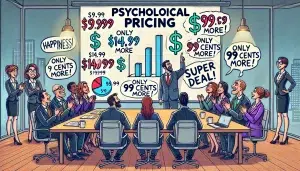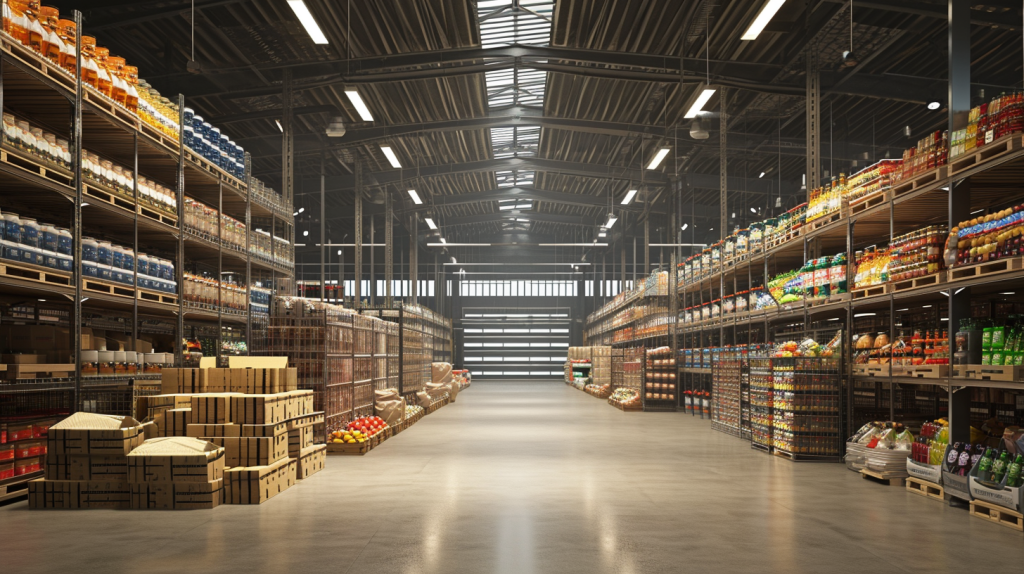
What is Wholesale Price
Wholesale price is the cost at which manufacturers or distributors sell products in bulk to retailers or other businesses for resale. It’s typically lower than the retail price, allowing buyers to make a profit when reselling the items.
Wholesale prices are usually calculated by considering the cost of goods sold (COGS), overhead expenses, and desired profit margin.
These prices often vary based on order volume, with larger orders receiving better rates to incentivize bulk purchasing.
You can find a better and in depth definition of Wholesale Price here
Table of Contents
- What Is Wholesale Price
- The Fundamentals of Wholesale Pricing
- Crafting Your Wholesale Pricing Strategy
- Step-by-Step Guide to Setting Wholesale Prices
- Common Pitfalls in Wholesale Pricing
- Myth-Busting: Debunking Wholesale Pricing Misconceptions
- My Experience with Wholesale Item Pricing
- How Pricefy Can Streamline Your Wholesale Pricing
- Future Trends in Wholesale Pricing
- Pro Tips for Wholesale Pricing Success
- What Not to Do: Wholesale Pricing Mistakes to Avoid
- Conclusion: Mastering the Art of Wholesale Pricing
- Useful Links
- FAQs
The Fundamentals of Wholesale Pricing

Before we dive into the nitty-gritty of setting wholesale prices, let’s lay the groundwork with some essential concepts:
What Makes Wholesale Pricing Unique?
Wholesale pricing is a whole different ballgame compared to retail pricing. It’s like comparing apples to, well, a truckload of apples! Here’s why:
- Volume discounts: Wholesalers often offer lower prices for larger orders.
- Reduced marketing costs: You’re selling to businesses, not end consumers.
- Long-term relationships: Wholesale often involves ongoing partnerships.
- Competitive landscape: You’re up against other wholesalers, not just retailers.
The Wholesale Pricing Equation
At its core, wholesale pricing follows this basic formula:
Wholesale Price = Cost of Goods Sold (COGS) + Overhead Expenses + Desired Profit MarginSounds simple, right? But like a complex recipe, the devil’s in the details. Let’s break it down:
- COGS: This includes raw materials, labor, and direct production costs.
- Overhead: Think rent, utilities, salaries, and other indirect expenses.
- Profit Margin: The sweet spot that keeps your business growing without pricing you out of the market.
Did you know? According to a 2023 study by the National Association of Wholesaler-Distributors, the average gross margin for wholesalers is around 25%. But remember, this varies widely by industry and product type.
Wholesale vs. Retail: A Tale of Two Prices

Ever wonder why wholesale prices are lower than retail? It’s not magic—it’s math!
Here’s a quick comparison:
| Aspect | Wholesale | Retail |
|---|---|---|
| Volume | High | Low |
| Price | Lower | Higher |
| Customer | Businesses | End consumers |
| Profit per unit | Lower | Higher |
| Overall profit potential | Higher (due to volume) | Lower |
Now that we’ve got the basics down, let’s roll up our sleeves and get into the real meat of wholesale pricing strategy!
Crafting Your Wholesale Pricing Strategy
Alright, e-commerce entrepreneurs, it’s time to put on your strategy hats!
Developing a solid wholesale pricing strategy is like creating a roadmap for your business’s success.
Let’s explore some key elements:
1. Know Your Costs Inside Out
Before you can set a price, you need to know exactly what it costs you to produce or acquire your items. This includes:
- Direct costs (materials, labor)
- Indirect costs (overhead, shipping)
- Hidden costs (shrinkage, returns)
Pro Tip: Use a wholesale markup calculator to streamline this process and ensure accuracy or you can use Pricefy
2. Understand Your Market
You wouldn’t sail without checking the weather, right? Similarly, don’t set prices without understanding your market:
- Research competitor prices
- Analyze industry trends
- Consider economic factors
3. Define Your Value Proposition
What makes your products special? Your wholesale pricing should reflect your unique selling points:
- Quality
- Innovation
- Brand reputation
- Customer service
4. Set Clear Goals
Are you looking to:
- Maximize profits?
- Gain market share?
- Clear inventory?
Your pricing strategy should align with your business objectives.
5. Consider Volume-Based Pricing
Incentivize larger orders with tiered pricing:
Order Quantity | Discount
1-99 units | 0%
100-499 units | 5%
500+ units | 10%Remember, these are just examples. Your specific tiers should reflect your costs and profit margins.
6. Factor in Seasonality
Does demand for your products fluctuate throughout the year?
Your pricing strategy should account for these changes:
- Higher prices during peak seasons
- Promotional pricing during slow periods
- Bundle deals to move slow-moving inventory
By considering these factors, you’ll be well on your way to crafting a wholesale pricing strategy that’s as sturdy as a well-built pallet rack!
Step-by-Step Guide to Setting Wholesale Prices
Now that we’ve got our strategy in place, let’s roll up our sleeves and get down to the nitty-gritty of setting those wholesale prices. Follow these steps, and you’ll be pricing like a pro in no time!
Step 1: Calculate Your COGS
First things first, you need to know your Cost of Goods Sold (COGS). This is the direct cost associated with producing your items. Here’s how to calculate it:
COGS = Raw Materials + Direct Labor + Direct ExpensesFor example, if you’re selling handmade scarves:
- Raw Materials (yarn): $5
- Direct Labor: $10
- Direct Expenses (packaging): $1
- COGS = $5 + $10 + $1 = $16
Step 2: Determine Your Overhead Costs
Next, factor in your indirect costs. These might include:
- Rent
- Utilities
- Marketing
- Administrative salaries
Let’s say your total monthly overhead is $5,000, and you produce 1,000 scarves per month. Your overhead cost per scarf would be $5.
Step 3: Decide on Your Profit Margin
This is where the rubber meets the road. How much profit do you want to make?
A common wholesale profit margin is between 20-40%. Let’s aim for 30% in our example.
Step 4: Apply the Wholesale Price Formula
Now, let’s put it all together:
Wholesale Price = (COGS + Overhead) ÷ (1 - Desired Profit Margin)Using our scarf example:
- COGS: $16
- Overhead per unit: $5
- Desired Profit Margin: 30% (0.3)
Wholesale Price = ($16 + $5) ÷ (1 – 0.3) = $21 ÷ 0.7 = $30
Step 5: Compare to Market Rates
Now that you have your calculated price, it’s time for a reality check. How does $30 compare to similar wholesale scarves in the market?
If it’s significantly higher, you might need to find ways to reduce costs or adjust your profit expectations.
Step 6: Test and Adjust
Pricing isn’t a “set it and forget it” affair. Start with your calculated price, but be prepared to adjust based on:
- Customer feedback
- Sales volume
- Competitor actions
Remember, finding the right price is often an iterative process. Don’t be afraid to tweak and refine your pricing strategy over time.
By following these steps, you’ll have a solid foundation for your wholesale pricing. But remember, pricing is as much an art as it is a science. Trust your instincts, stay flexible, and always keep your finger on the pulse of your market!
Common Pitfalls in Wholesale Pricing
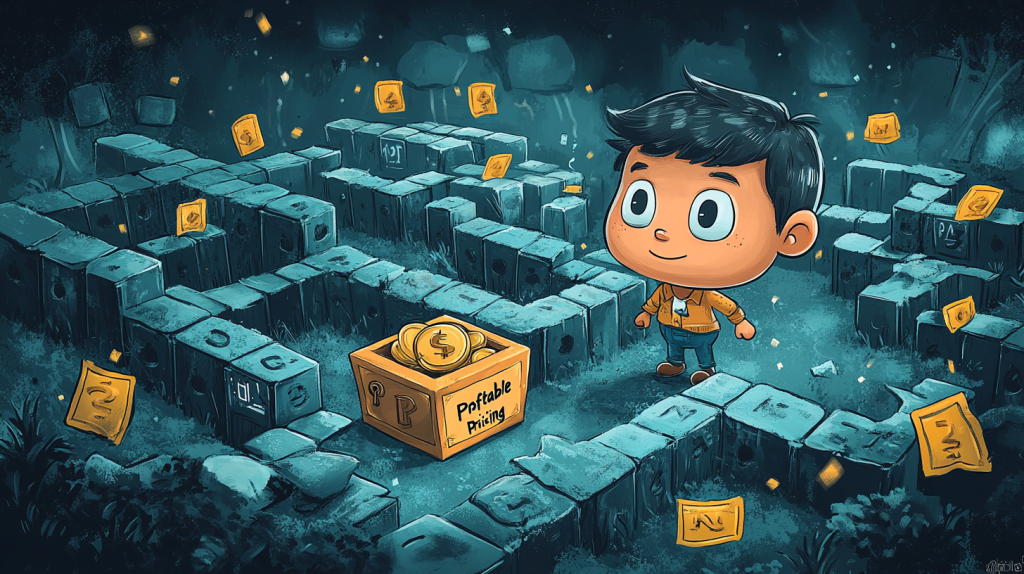
Even the savviest e-commerce entrepreneurs can stumble when it comes to wholesale pricing.
Let’s shine a light on some common pitfalls so you can sidestep them with grace:
1. Underestimating Costs
This is the granddaddy of all pricing mistakes. It’s easy to forget about those sneaky indirect costs or underestimate the time and resources that go into your products. Remember, every penny counts!
Solution: Conduct a thorough cost analysis regularly. Use tools like time-tracking software and detailed expense reports to capture all costs.
2. Ignoring Market Dynamics
Pricing in a vacuum is like trying to sail without checking the wind. You might set prices based solely on your costs, only to find that the market won’t bear them.
Solution: Regularly research competitor prices and stay updated on industry trends. Tools like price monitoring software can be invaluable here.
3. Failing to Differentiate
If your wholesale prices are identical to everyone else’s, why should buyers choose you?
Solution: Identify your unique value proposition and ensure your pricing reflects it. Maybe you offer superior quality, faster shipping, or exceptional customer service.
4. Over-Discounting
In the rush to secure big orders, it’s tempting to slash prices to the bone. But this can lead to unsustainable business practices and devalue your brand.
Solution: Establish clear discount tiers based on volume, and stick to them. Remember, it’s okay to walk away from deals that don’t make financial sense.
5. Neglecting to Review and Adjust
The market is always changing, and your pricing should too. Failing to review and adjust your prices regularly can leave money on the table or price you out of the market.
Solution: Set regular intervals (quarterly, for example) to review your pricing strategy. Consider factors like cost changes, market trends, and your own business goals.
6. Forgetting About Profitability
It’s not just about making sales—it’s about making profitable sales. Some entrepreneurs get so focused on moving volume that they forget to ensure each sale contributes to the bottom line.
Solution: Calculate your break-even point for each product and ensure your wholesale prices always allow for a healthy profit margin.
By avoiding these common pitfalls, you’ll be well on your way to wholesale pricing success. Remember, in the world of e-commerce, knowledge is power—and profit!
Myth-Busting: Debunking Wholesale Pricing Misconceptions
In the wild world of wholesale pricing, myths and misconceptions run rampant.
Let’s play myth-busters and separate fact from fiction!
Myth 1: “Wholesale Prices Should Always Be 50% of Retail”
Reality Check: While the 50% rule is common, it’s not a one-size-fits-all solution. Your wholesale pricing should be based on your specific costs, market conditions, and business goals. Some industries might work with a 30% margin, while others might need 70% to be profitable.
Myth 2: “Lower Prices Always Lead to More Sales”
Reality Check: Not necessarily! While competitive pricing is important, rock-bottom prices can actually hurt your brand perception and profitability. Buyers often associate price with quality. Focus on providing value rather than just being the cheapest option.
Myth 3: “You Can’t Negotiate Wholesale Prices”
Reality Check: Flexibility can be your friend in wholesale. While it’s important to have a clear pricing structure, being open to negotiation for large orders or long-term contracts can help you secure valuable business relationships.
Myth 4: “Wholesale Pricing is Only About Volume”
Reality Check: Volume is important, but it’s not the only factor. Consider things like payment terms, shipping costs, and the potential for repeat business when setting your wholesale prices.
Myth 5: “You Should Use the Same Markup for All Products”
Reality Check: Different products often have different costs, market demand, and competitive landscapes. It’s okay (and often necessary) to have varying markups across your product line.
By busting these myths, you’re now armed with the truth about wholesale pricing. Remember, successful pricing is about understanding your unique business situation, not following one-size-fits-all rules!
My Experience with Wholesale Item Pricing

As an e-commerce manager who’s worked with numerous online stores, I’ve seen my fair share of wholesale pricing triumphs and tribulations. Let me share a story that might shed some light on the real-world challenges of pricing for wholesale.
A few years ago, I was working with a small artisanal soap company. They had a fantastic product—handmade, all-natural soaps with unique scents and beautiful packaging. Their retail sales were strong, but they wanted to break into the wholesale market.
Initially, we priced their wholesale soap bars at exactly 50% of the retail price, following the “common wisdom” we’d heard. We were excited when orders started coming in, but after a few months, we realized we had a problem. Our profit margins were razor-thin, and we were struggling to keep up with the volume of orders without compromising on quality.
We took a step back and did a deep dive into our costs. We realized we’d underestimated the time it took to produce each bar, and we hadn’t factored in the cost of the fancy packaging that wholesale buyers expected.
So, we went back to the drawing board. We recalculated our COGS, factored in all our overhead costs, and set a target profit margin that would allow for sustainable growth. The result? Our new wholesale price was about 60% of the retail price.
We were nervous about raising prices, fearing we’d lose customers. But here’s where it gets interesting: not only did we retain most of our wholesale clients, but we also attracted new ones. It turned out that our higher price point actually increased perceived value, positioning our soaps as a premium product.
The lesson? Don’t be afraid to price your products based on their true value and your business needs. Sometimes, a higher price can actually work in your favor, attracting the right kind of customers who appreciate quality and are willing to pay for it.
This experience taught me that wholesale pricing is a journey of continuous learning and adjustment. It’s not just about numbers on a spreadsheet—it’s about understanding your product’s value, your business’s needs, and your customers’ perspectives.
How Pricefy Can Streamline Your Wholesale Pricing
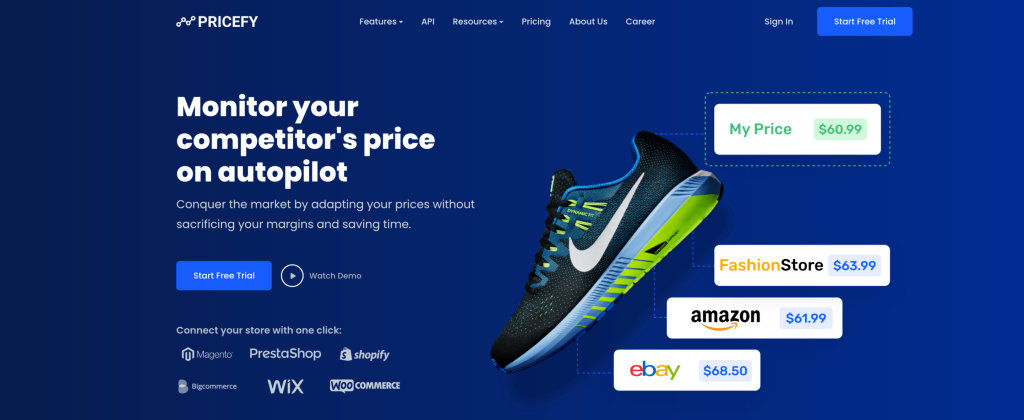
As an e-commerce manager who’s worked with various pricing tools, I can confidently say that Pricefy stands out for its user-friendly interface and powerful features tailored for wholesale pricing.
Key Features of Pricefy for Wholesale Pricing:
- Dynamic Pricing Engine: Pricefy’s algorithm considers factors like cost, market demand, and competitor prices to suggest optimal wholesale prices in real-time.
- Bulk Order Discounts: Easily set up tiered pricing structures for different order volumes, encouraging larger purchases from your wholesale buyers.
- Cost Analysis Tool: Keep track of all your costs – from production to shipping – ensuring your wholesale prices always cover expenses and maintain profitability.
- Competitor Price Monitoring: Stay ahead of the game by automatically tracking your competitors’ wholesale prices and adjusting yours accordingly.
- Customer Segmentation: Tailor your wholesale prices for different customer groups based on factors like order history, loyalty, or industry.
- Profit Margin Calculator: Instantly see how different pricing strategies affect your bottom line, helping you make informed decisions.
- Integration Capabilities: Seamlessly connect Pricefy with your existing e-commerce platform, inventory management system, and accounting software for a holistic approach to pricing.
By leveraging Pricefy’s capabilities, you can transform your wholesale pricing from a time-consuming guessing game into a strategic, data-driven process. This not only saves you time but also helps maximize your profitability and competitiveness in the wholesale market.
Remember, in the fast-paced world of e-commerce, having the right tools can be the difference between struggling to keep up and staying ahead of the curve. With Pricefy, you’re equipping your business with a powerful ally in the quest for optimal wholesale pricing.
Future Trends in Wholesale Pricing
As we peer into the crystal ball of e-commerce, it’s clear that wholesale pricing is evolving at a rapid pace. Let’s explore some emerging trends that could shape the future of wholesale pricing:
1. AI-Powered Dynamic Pricing
Artificial Intelligence is set to revolutionize wholesale pricing. AI algorithms will analyze vast amounts of data – from market trends to individual buyer behavior – to suggest optimal prices in real-time. This could lead to:
- More personalized pricing for each wholesale buyer
- Faster adaptation to market changes
- Improved profit margins through data-driven decisions
2. Blockchain for Transparent Pricing
Blockchain technology could bring unprecedented transparency to wholesale pricing. Imagine a world where:
- Pricing history is immutably recorded
- Smart contracts automatically adjust prices based on predefined conditions
- Trust between wholesalers and buyers is enhanced through complete transparency
3. Subscription-Based Wholesale Models
The subscription economy is booming in B2C, and B2B is following suit. We might see:
- Wholesale pricing models based on regular, recurring orders
- Tiered subscription plans offering different levels of access to products or pricing
- More predictable revenue streams for wholesalers
4. Eco-Friendly Pricing Structures
As sustainability becomes increasingly important, we may see:
- Premium pricing for eco-friendly products or packaging
- Discounts for buyers who opt for carbon-neutral shipping
- Pricing that factors in the true environmental cost of products
5. Hyper-Personalization in Wholesale
Gone are the days of one-size-fits-all pricing. The future might bring:
- Prices tailored to each buyer’s unique purchasing patterns and needs
- Integration of CRM data into pricing algorithms
- Real-time price adjustments based on buyer behavior
6. Value-Based Pricing in B2B
More wholesalers may shift towards pricing based on the value their products bring to buyers, rather than just costs. This could lead to:
- More emphasis on ROI in wholesale pricing discussions
- Increased importance of post-sale support and services in pricing models
- Greater differentiation between premium and budget wholesale offerings
As these trends unfold, wholesalers who stay ahead of the curve will be best positioned to thrive in the evolving e-commerce landscape. The future of wholesale pricing is dynamic, data-driven, and more customized than ever before!
Pro Tips for Wholesale Pricing Success
Ready to take your wholesale pricing game to the next level? Here are some pro tips that can give you an edge:
- Keep Your Finger on the Pulse: Set up Google Alerts for your industry and key competitors. Stay informed about market trends that could impact your pricing.
- Leverage Psychology: Use charm pricing (ending prices with .99 or .97) even in wholesale. It’s surprising how effective this can be, even with business buyers!
- Bundle Strategically: Create product bundles that encourage larger orders. Price these bundles attractively to increase your average order value.
- Offer Exclusivity: Consider offering exclusive products or early access to new items for your top wholesale clients. This can justify premium pricing.
- Use Time-Limited Offers: Create a sense of urgency with limited-time wholesale discounts. But use this strategy sparingly to maintain its effectiveness.
- Implement a Minimum Order Quantity (MOQ): This helps you maintain profitability on smaller orders and encourages larger purchases.
- Consider Geographicl Pricing: If you sell internationally, factor in local market conditions and currencies when setting your wholesale prices.
- Provide Excellent Documentation: Clear, detailed pricing sheets and terms can reduce negotiation time and build trust with wholesale buyers.
- Offer Multiple Payment Terms: Giving options like net 30 or early payment discounts can attract different types of wholesale buyers.
- Don’t Forget About Shipping: Factor shipping costs into your wholesale pricing strategy. Consider offering free shipping for orders above a certain value.
Successful wholesale pricing is as much about building relationships as it is about numbers. By providing value, being transparent, and staying flexible, you’ll be well on your way to wholesale pricing mastery!
What Not to Do: Wholesale Pricing Mistakes to Avoid
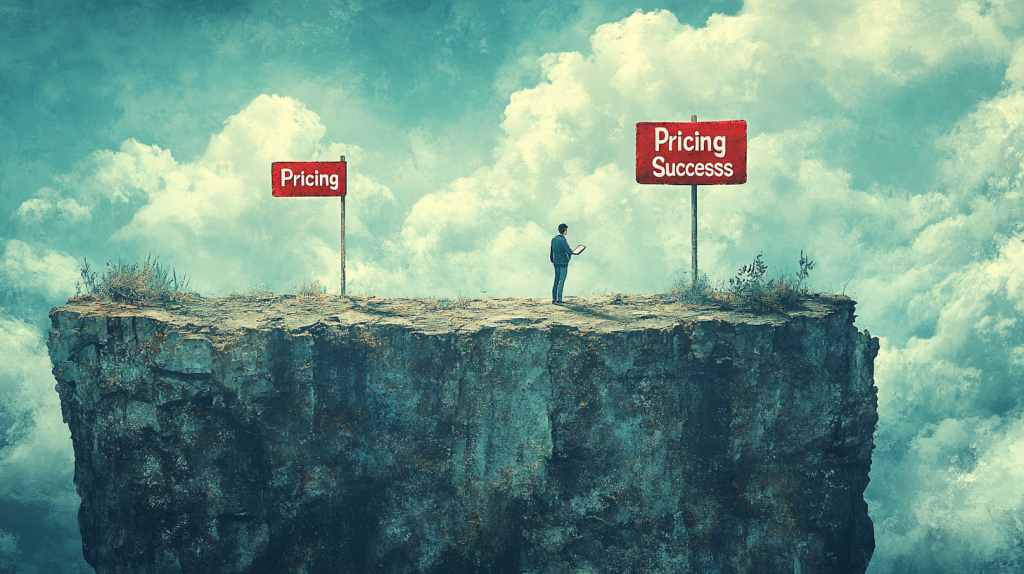
Even the most seasoned e-commerce managers can stumble when it comes to wholesale pricing. Here’s a list of common mistakes and how to avoid them:
Don’t Ignore Your Costs:
- Mistake: Failing to account for all costs when setting wholesale prices.
- Solution: Regularly review and update your cost calculations, including hidden costs like returns or damaged goods.
Don’t Price in a Vacuum:
- Mistake: Setting prices without considering market conditions or competitor pricing.
- Solution: Use competitive pricing tools and conduct regular market research.
Don’t Over-Discount:
- Mistake: Offering unsustainable discounts to win big orders.
- Solution: Establish clear discount tiers and stick to them. Remember, it’s okay to walk away from unprofitable deals.
Don’t Neglect Your Brand Value:
- Mistake: Pricing solely based on cost, ignoring the value your brand brings.
- Solution: Factor in your brand’s reputation, quality, and unique selling points when setting prices.
Don’t Complicate Your Pricing Structure:
- Mistake: Creating an overly complex pricing system that confuses wholesale buyers.
- Solution: Keep your wholesale pricing simple and transparent. If you can’t explain it easily, it’s too complicated.
Don’t Forget About Scalability:
- Mistake: Setting prices that work for current volumes but don’t account for growth.
- Solution: Use scalable pricing models that can accommodate increased production volumes.
Don’t Ignore Customer Feedback:
- Mistake: Dismissing customer comments about your pricing.
- Solution: Regularly seek and consider feedback from your wholesale buyers. They can provide valuable market insights.
Don’t Set and Forget:
- Mistake: Failing to regularly review and adjust your wholesale prices.
- Solution: Schedule regular pricing reviews (quarterly, for example) to ensure your prices remain competitive and profitable.
Don’t Undervalue Your Unique Offerings:
- Mistake: Pricing unique or innovative products the same as commodity items.
- Solution: If you have proprietary or standout products, don’t be afraid to price them higher. Justify the premium with clear value propositions.
Don’t Neglect After-Sale Costs:
- Mistake: Forgetting to factor in costs like customer support or returns when setting wholesale prices.
- Solution: Consider the total cost of selling and supporting your products, not just the production cost.
By avoiding these common pitfalls, you’ll be well on your way to developing a robust, profitable wholesale pricing strategy.
Remember, pricing is an ongoing process – stay vigilant, stay informed, and don’t be afraid to adjust course when needed!
Conclusion: Mastering the Art of Wholesale Pricing

As we wrap up our deep dive into the world of wholesale pricing, let’s recap the key points and look at the big picture:
- Understand Your Costs: Knowing your COGS and overhead is the foundation of effective pricing.
- Know Your Market: Stay informed about competitor pricing and industry trends.
- Value Your Brand: Don’t underprice your products – consider the unique value you bring to the table.
- Be Strategic: Use techniques like tiered pricing and bundles to encourage larger orders.
- Stay Flexible: Be prepared to adjust your prices in response to market changes or customer feedback.
- Leverage Technology: Tools like Pricefy can streamline your pricing process and provide valuable insights.
- Think Long-Term: Build pricing strategies that support sustainable growth, not just short-term gains.
- Keep Learning: The world of e-commerce is always evolving. Stay curious and keep refining your approach.
Remember, wholesale pricing isn’t just about numbers – it’s about building relationships, communicating value, and positioning your business for success in the competitive e-commerce landscape.
As you move forward, approach your wholesale pricing with confidence. You have the knowledge, the tools, and the strategies to set prices that attract customers, beat the competition, and drive profitability for your business.
So go ahead, take what you’ve learned here and apply it to your unique situation. Experiment, analyze, and refine your approach. With time and experience, you’ll develop an intuition for pricing that complements your data-driven strategies.
The world of wholesale awaits – are you ready to price your way to success?
Useful Links
- National Association of Wholesaler-Distributors
- Harvard Business Review: Pricing Strategy
- Shopify Wholesale Blog
- U.S. Small Business Administration: Pricing Strategy Guide
FAQs
- Q: How do I figure out the wholesale price of an item?
A: Calculate your COGS, add overhead costs, then divide by (1 – desired profit margin). Compare this to market rates and adjust as needed. - Q: What is a typical wholesale discount?
A: While it varies by industry, a common wholesale discount is 40-50% off retail price. However, this can range from 20-70% depending on various factors. - Q: What is a good margin for wholesale?
A: A typical wholesale profit margin ranges from 20-40%. However, the ideal margin depends on your industry, costs, and business goals. - Q: How do I price my products for wholesale?
A: Consider your costs, desired profit margin, market rates, and value proposition. Use the formula: Wholesale Price = (COGS + Overhead) ÷ (1 – Desired Profit Margin). - Q: Is 40% off good for wholesale?
A: 40% off retail can be a good starting point for many products, but it’s not a one-size-fits-all solution. Ensure this discount allows for profitability and aligns with your market positioning. - Q: Can you negotiate wholesale prices?
A: Yes, many wholesalers are open to negotiation, especially for large orders or long-term contracts. However, always ensure the negotiated price remains profitable. - Q: What is the wholesale equation?
A: A basic wholesale pricing equation is: Wholesale Price = (Cost of Goods + Overhead Expenses) ÷ (1 – Desired Profit Margin). - Q: How do you calculate the selling price per item?
A: To calculate selling price, use this formula: Selling Price = (Cost per item ÷ (1 – Desired Profit Margin)). For retail price, you’d typically mark this up further. - Q: Is wholesale usually 50% retail?
A: While 50% of retail is a common benchmark, it’s not a rule. Wholesale prices can range from 30-70% of retail depending on the product, industry, and business model. - Q: What is a typical wholesale fee?
- A: Wholesale fees vary widely, but typically range from 5-20% of the wholesale price. This fee covers the wholesaler’s operational costs and profit margin.
- Q: What is standard markup from wholesale to retail?
A: The standard markup from wholesale to retail is often 100% (known as keystone pricing), but can range from 30-250% depending on the industry and product type. - Q: How much profit does a wholesaler make vs retail?
A: Wholesalers typically make less profit per unit than retailers, but make up for it in volume. While retailers might aim for 50% margins, wholesalers often work with 20-40% margins. - Q: What is a wholesale price list?
A: A wholesale price list is a document detailing the prices at which a manufacturer or distributor sells products in bulk to retailers or other businesses for resale. - Q: What is the cost of goods sold by a wholesaler?
A: The cost of goods sold (COGS) for a wholesaler includes the purchase price of the product from the manufacturer, plus any direct costs associated with acquiring and preparing the goods for sale. - Q: How much do wholesalers make per deal?
A: The amount wholesalers make per deal varies greatly depending on the product, volume, and industry. It’s typically a percentage of the total sale value, often ranging from 5-30%. - Q: What is a standard wholesale margin?
A: While it varies by industry, a standard wholesale margin often falls between 20-40%. However, some industries may have lower or higher margins. - Q: What is the wholesale price method?
A: The wholesale price method involves setting prices based on the cost of goods, desired profit margin, and market conditions. It often includes volume discounts to incentivize larger purchases. - Q: What is the rule of thumb for wholesale pricing?
A: A common rule of thumb is to set wholesale prices at 50% of the retail price. However, this is not universal and should be adjusted based on your specific costs and market conditions. - Q: What determines wholesale price?
A: Wholesale price is determined by factors including production costs, overhead expenses, desired profit margin, market demand, competitor pricing, and volume discounts. - Q: What is a good minimum for wholesale?
A: A good minimum order value for wholesale varies by industry but should cover your costs and make the transaction worthwhile. It’s often set at $100-$500 or a specific number of units. - Q: How do you set wholesale and retail prices?
A: Set wholesale prices based on your costs and desired profit margin. Then, set retail prices at about double the wholesale price, adjusting based on market conditions and your brand positioning. - Q: What is minimum order amount in wholesale?
A: The minimum order amount in wholesale varies by business but is typically set to ensure profitability on smaller orders. It could be a specific dollar amount (e.g., $250) or a quantity of items. - Q: How to properly price your product?
A: To properly price your product, calculate your total costs, determine your desired profit margin, consider market rates and demand, and factor in your brand value and unique selling propositions. - Q: How does wholesale work for small business?
A: Small businesses can engage in wholesale by selling their products in bulk at discounted rates to retailers or other businesses. This allows for larger volume sales, albeit at lower per-unit profits. - Q: What is the average wholesale?
A: The average wholesale price is typically 50-60% of the retail price, but this can vary significantly depending on the industry, product type, and specific business model. - Q: What is considered a wholesale order?
A: A wholesale order is typically a bulk purchase made by a business for resale. It usually involves a larger quantity of items purchased at a discounted price compared to retail.


